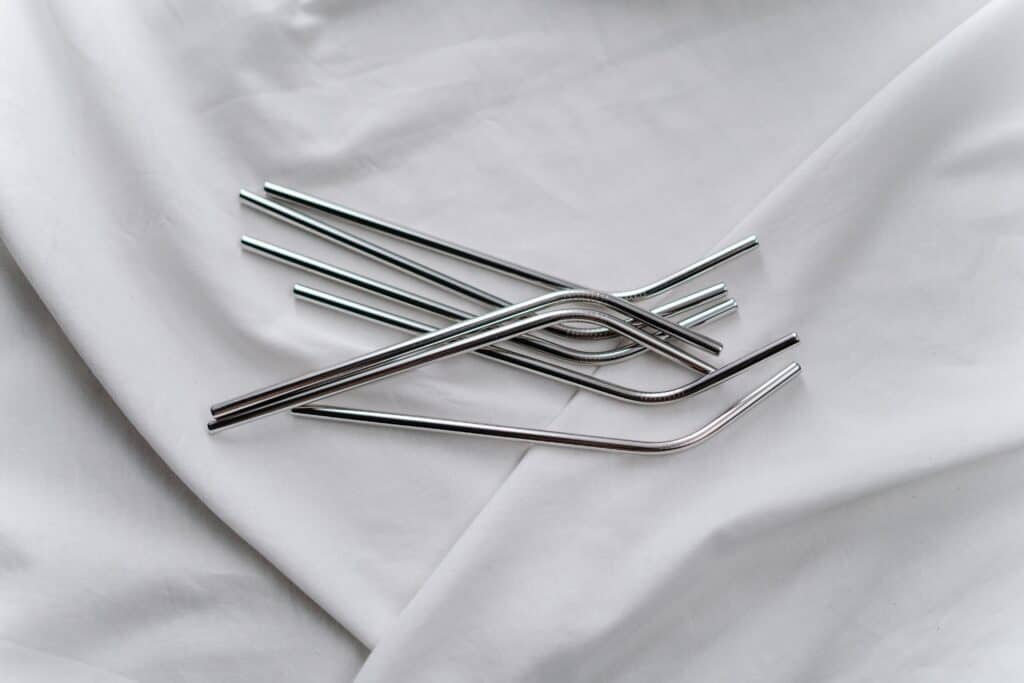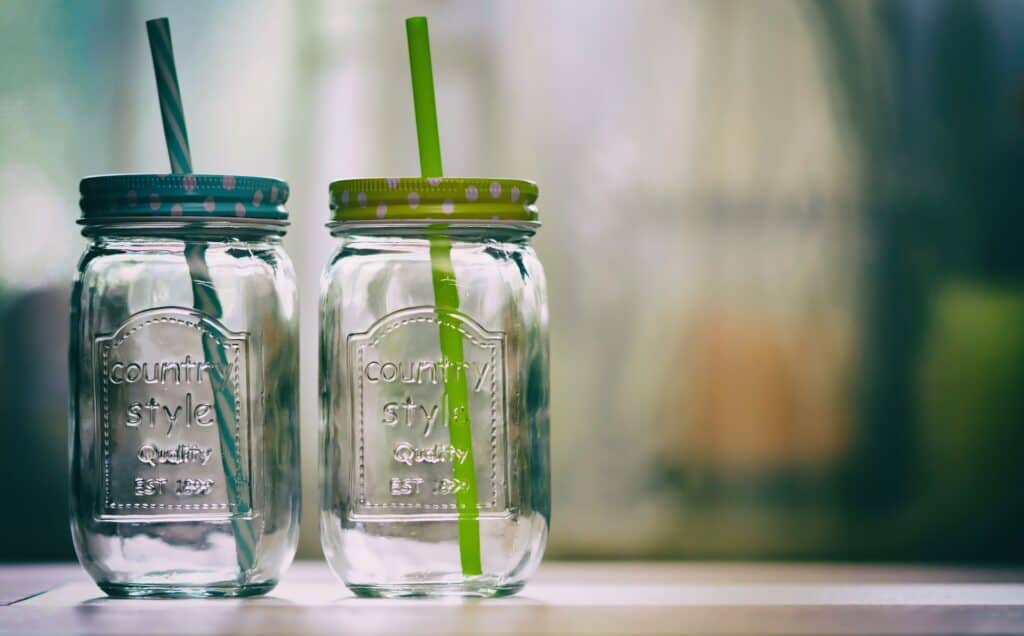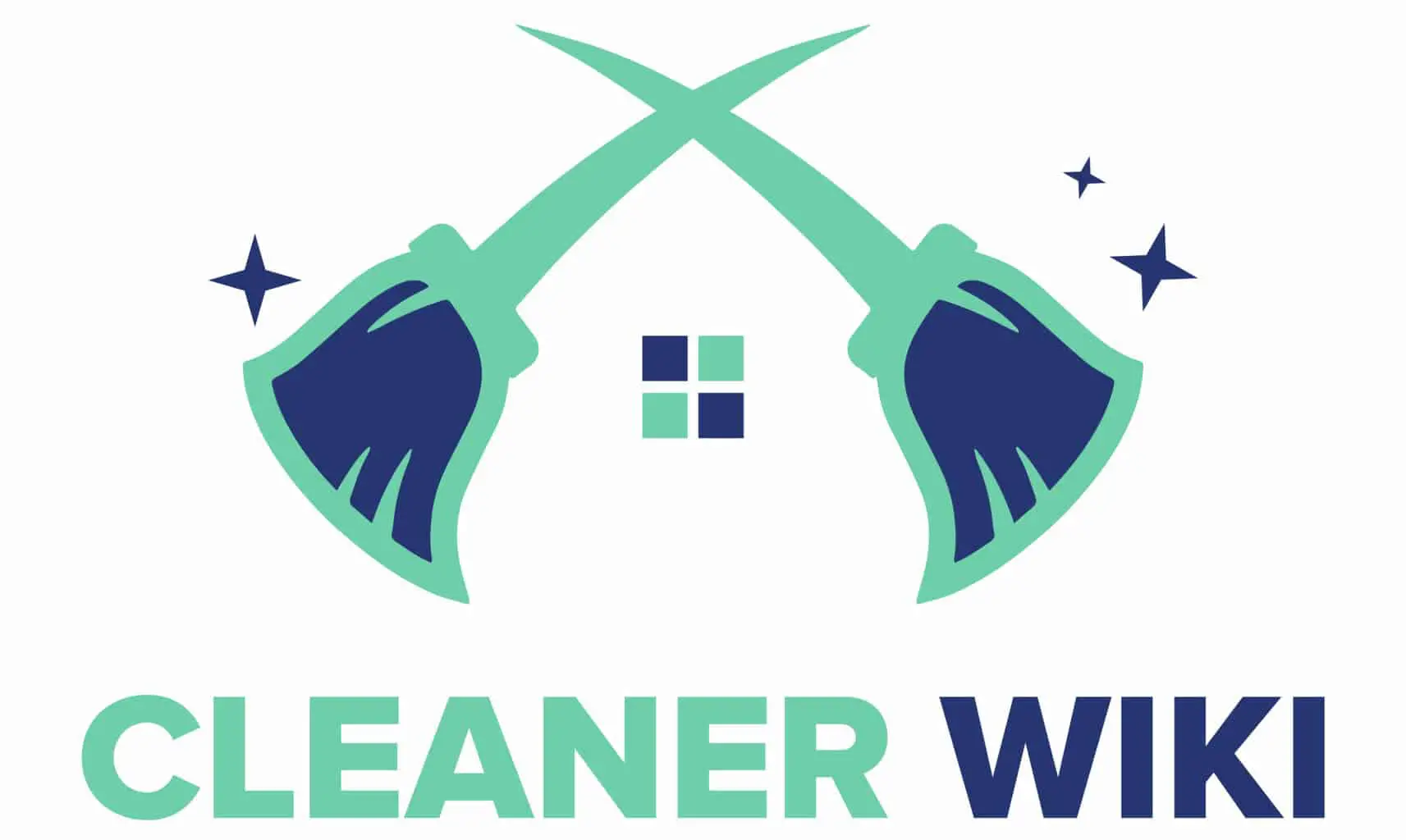As an Amazon Associate we earn from qualifying purchases.
Over recent years the environmental impacts of disposable plastic straws have forced us to embrace sustainable ways. Reusable straws have become part of us but with additional responsibilities in care and cleaning. Because of that, we have done this guide to help you understand how to clean straws.
Contents
How to Clean Straws
There are many methods that you can use to clean your straws. All these methods are effective, easy to follow, and require the use of readily available tools.
To clean your straws, you need to factor in a number of things such as:
- Whether your straw is bamboo, glass, metal, plastic, or other types
- How frequently you use your straw
- Whether the straw is for home or commercial purposes and,
- The pulp content or thickness of the drink you are taking with the straw
Depending on these factors, you can choose from the simplest to the most complex method to clean your straws.

How to Clean Straws with a Brush or Pipe Cleaner
Before you begin the cleaning process, you need a straw brush or pipe cleaner that fits into your straw. Many reusable straws come with such little straw brushes for cleaning them.
However, if you don’t have a cleaning brush, you can use a pipe cleaner. The pipe cleaner or straw brush should be long enough to clean the entire inside of your straw. When using shorter pipe cleaners, you can join several of them to get the perfect length.
Other Recommended Tools for Cleaning Straws
- Sink with running hot water.
- Dish soap (any soap can do).
- Small dish tub.
- Dishwashing machine (convenient but not essential).
- Utensil rack for airing and drying clean straws.
- Commercial utensil sanitizing solution for cleaning reusable straws in a commercial setup
You probably already have most of these tools in your kitchen. However, if not, you can easily get them from your local store or buy online.
Got everything? Great. Now follow these steps to clean your reusable straws.
Step One: Apply Dish Soap to the Pipe Cleaner
Wet the pipe cleaner or straw brush and apply a few drops of dish soap. While you can use any soap, dish soap with natural ingredients is the best option. Avoid perfumed soaps since they can rub off their strong scent on the straws making it unpleasant to use them.
You don’t want to take your drinks with some smell coming from the straw. This is especially important in a commercial setting.
Step Two: Clean the Straw using the Pipe Cleaner
Insert the straw brush or pipe cleaner inside the straw and scrub until it becomes sudsy. If you are using a straw brush, squeeze it into the straw and thoroughly wash to remove the sticky materials.
When using a pipe cleaner, you need to insert the whole pipe cleaner into the straw until it emerges from the other end of the straw. Pull and push your pipe cleaner back and forth several times to scrub out the sticky and hidden materials.
Step Three: Clean the Outside with a Sponge
Apply some soap on a sponge and scrub the exterior parts of your straw to clean out any debris or drink residue. In case you do not have a sponge, you can use the soap and scrub the straw with your fingers. The sponge, however, gives better results.
Step Four: Rinse the Straw
Pass warm water inside your straw to rinse out the soap residue. Check if there are any more residue stuck in the straw. If there is, pass more warm water. Ensure that you use enough water. You do not want to smell or drink soap residue when using the straw.

Step Five: Remove Remaining Debris with Baking Soda
If you can still see some drink debris in the straw, or you suspect the straw is not clean enough, sprinkle some baking soda onto your straw brush or pipe cleaner, then re-scrub the straw. Repeat the rinsing process above.
Step Six: Dry the Straw
Place your straw in an Upright position to drain the excess water and completely dry. You can use a drying rack for this purpose. Ensure that the straw dries well before you put it away to avoid mildew.
How to Clean Straws without a Straw Brush or Pipe Cleaner
Do not worry if you do not have a straw brush or pipe cleaner to clean your straw. There are three easy methods to clean your straws without brush or pipe cleaners. Each one of them is effective and will give you perfect results if you apply them correctly.
Method One: Soaking Straws in Warm Soapy Water
Soak the straw in warm soapy water in a large mason jar to break up any sticky residue inside the straw. Close the jar and shake vigorously to loosen the sticky materials. Depending on how resistant the foreign materials are, you could soak your straw for a few minutes or hours.
After soaking, run hot water through the inside of the straw to remove the soap residue. Apply some dish soap on your hands or sponge and scrub the outside of the straw. Then run hot water on the outside of the straw to wash out the soap.
Method Two: Running Water Through Your Reusable Straw Immediately After Use
This method is useful when applied immediately you finish using your straws. If your straw stays for long after use, the liquid or fluid you used it in will dry and stick on the inside and outside of the straw. You can quickly notice it with thick drinks.
Running water through the straw before the drink settles will wash it clean. If you cannot immediately run water through the straw, you can soak it in a water bottle or can and take a few sips.
Method Three: Running the Straw Through Your Dishwasher
Not all reusable straws are safe in the dishwasher. Therefore, you need to read manufactures instructions on your straw to see if it is okay to do this.
If it’s allowed, you can run it together with other cooking utensils like your grill mats and pancake griddles when doing the dishes to save power and time. Remove the utensils from the washer and put your straw in an upright position to drain any water.
We recommend that you put your clean reusable straws in a utensil rack and let them dry out completely. It is important to note that this method is perfect with steel and glass straws. Bamboo straws, are better soaked and rinsed instead.

How Do I Take Care of My Reusable Straws in a Commercial Establishment?
If you operate a commercial bar, restaurant, or any other drink or food joint, using serving glasses with reusable straws could give your joint a touch of sustainability and style. However, cleaning these straws may become a challenge, especially when you have many customers to serve.
In such a setup you can have two separate tubs, one for soaking the straws in soapy water and the second tub for soaking the clean straws in a commercial sanitizing solution. Ensure that you follow the set health protocols.
The cleaning process for such straws should be thorough, so it is essential to have a proper straw brush or pipe cleaners. You can use the same steps discussed above except that you need to soak the straws in a sanitizing solution for at least one minute.
How To Store Clean Straws At Home
You can place your reusable straws upright in a cup or a small tin and store them in your kitchen cupboard or cabinet. Also, you can keep them in your kitchen drawer along with other reusable flatware.
Some stores even offer small cotton drinking straw carrying pouches or canvas sleeves when you buy these items that you can use to store your straws. With these pouches, it is more comfortable and hygienic to keep and carry your straws. You can even have them in your handbag, purse, or vehicle compartments.
How To Store Clean Straws In A Commercial Set Up
The best way to store straws in such setups is in containers made of plastic, glass, metal, or ceramic. Storage containers should be stable and hold bulk containers vertically and some inches shorter than the straws.
You should pick a consistent location to keep your clean straws at your restaurant kitchen or storage room. That way, they are easier to grab when needed. We recommend you use a pint glass or mug. Proper storage of straws will also minimize contamination, especially with multiple handlers.
Always ensure that you limit and monitor the handling of the reusable straws. Staff handling share straws should observe proper hygiene protocols.
Bottom Line
The Natural Resources Defence Council (NRDC) projects that by 2050, there will be more plastic than fish in the ocean. A good percentage of these plastics come from disposable plastic straws. That is using reusable straws is a great idea as they both environmentally friendly and cost-effective.
However, being reusable, these straws need high hygiene standards, especially in a commercial setting. We hope you have learned how to properly clean your straws.
